Neoplasm Intro and Benign Growth
So What’s a Neoplasm?
Neoplasia: “new growth”
Neoplasms are neoplastic growth with the uncontrolled or disorderly proliferation of cells resulting in benign or malignant tumors.
In 2006, there were over 10 million new cases worldwide and 6 million deaths (in the US 500,000 deaths/year)
Oncology: the study of neoplasms, comes from the “onkos” (a bulging mass).
Tumors have 2 basic components: proliferating tumor cells and supporting stroma with connective tissue and vessels.
Neoplasms are classified into benign or malignant based on the biological behavior
Benign Neoplasms: Resembles original tissue, grows slowly, does NOT metastasize, often encapsulated, does NOT invade and destroy
Malignant Neoplasms: undifferentiated, uncontrolled growth, invasion of tissues around them, metastasis
Incidence vs. Mortality
Incidence: how many people get it
Mortality: how many people die from it
The environment plays an important role. There are usually no major differences when comparing men and women.
Benign Tumors (-omas)
Benign tumors use the suffix -omas but there are a few exceptions like sarcoma or lymphoma
Biological Behavior of benign neoplasms: slow growth, often encapsulated, no metastasis, non-destructive
Papilloma
Papillomas arise from surface epithelium (skin, mouth, gut, bladder), usually are “finger-like” projections, and have various causes (HPV (CONTAGIOUS), warts, viral infections)
 Adenomas
Adenomas
Adenomas arise from glandular epithelium (colonic polyps, thyroid, liver)
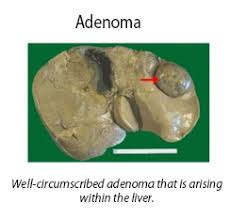 Of Mesenchymal Origin
Of Mesenchymal Origin
Muscle, connective tissue, fat (lipoma), bone, cartilage
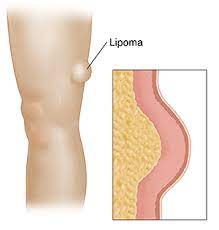 Most Common Benign Tumor
Most Common Benign Tumor
Nevus: the most common benign tumor, a pigmented mole, the proliferation of melanocytes
 Hemangiomas
Hemangiomas
Hemangiomas: begin tumors of the vascular epithelium (color tells depth)
Infantile Hemangiomas
 Infantile Hemangiomas: most frequent (~4-5% of newborns), appear at 4-6 weeks, grow quickly, and then disappear.
Infantile Hemangiomas: most frequent (~4-5% of newborns), appear at 4-6 weeks, grow quickly, and then disappear.
Congenital Hemangiomas
 Congenital Hemangiomas: less frequent, present at birth, may remain or shrink or go pale.
Congenital Hemangiomas: less frequent, present at birth, may remain or shrink or go pale.
Cavernous Hemangiomas: are most often congenital
Cherry Angiomas
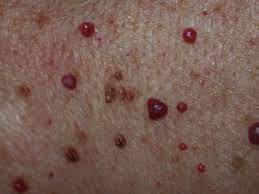 Cherry Angiomas: AKA senile angiomas, occur with age.
Cherry Angiomas: AKA senile angiomas, occur with age.
Stork Bites
 Stork bites are NOT hemangiomas, they are harmless nevus simplex, dilated capillaries, and typically fade with time.
Stork bites are NOT hemangiomas, they are harmless nevus simplex, dilated capillaries, and typically fade with time.
Hamartomas
Hamartomas: are “tumors” but NOT neoplasms, they are a disorganized overgrowth of different cells and tissues not normally found in an organ.
Hamartomas are NOT a neoplastic proliferation of 1 cell type.
These grow at the same rate as normal tissues.
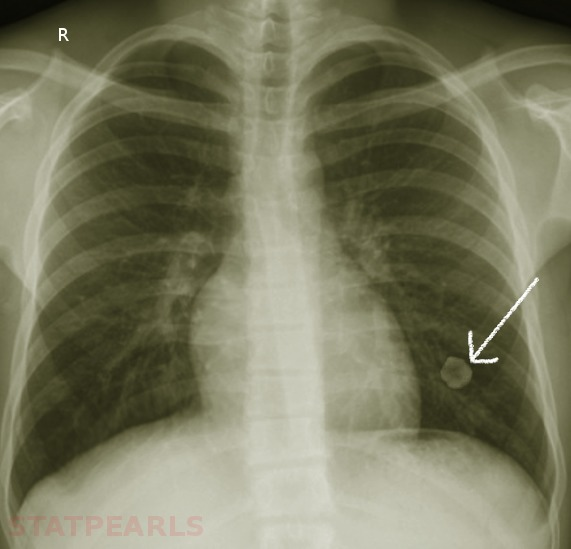
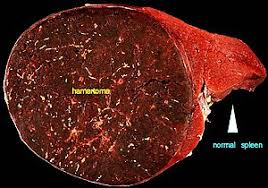 \n
\n
Occurs usually in the lungs (the most frequent location) and consists of fat, cartilage, and connective tissue. In the kidney or spleen, we see nodules with increased red pulp (blood vessels with a tendency and bleed).